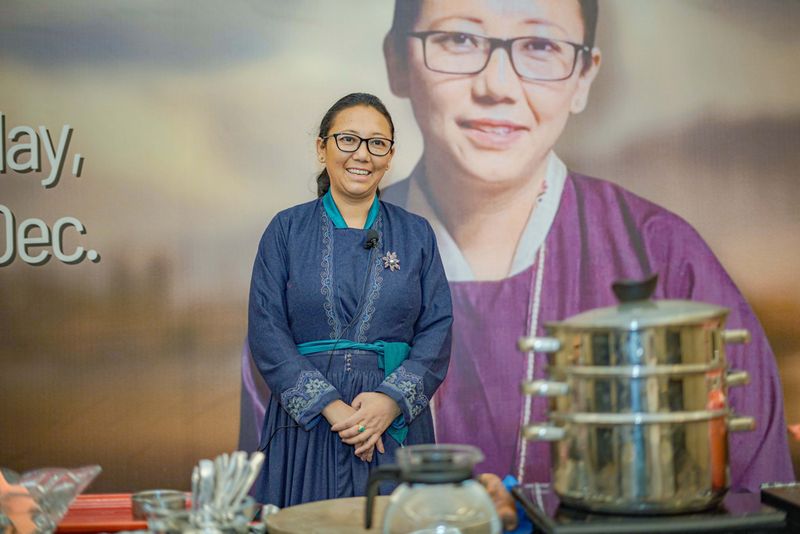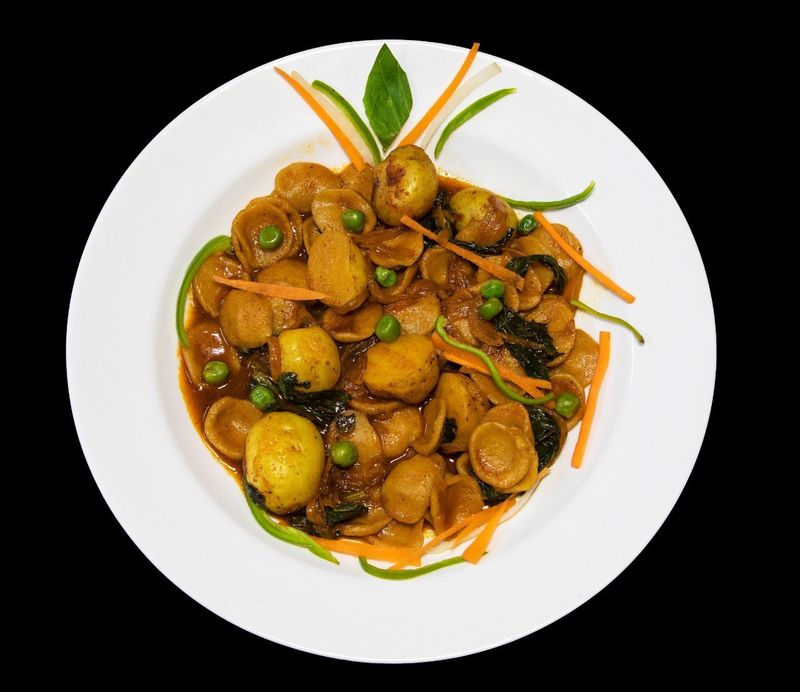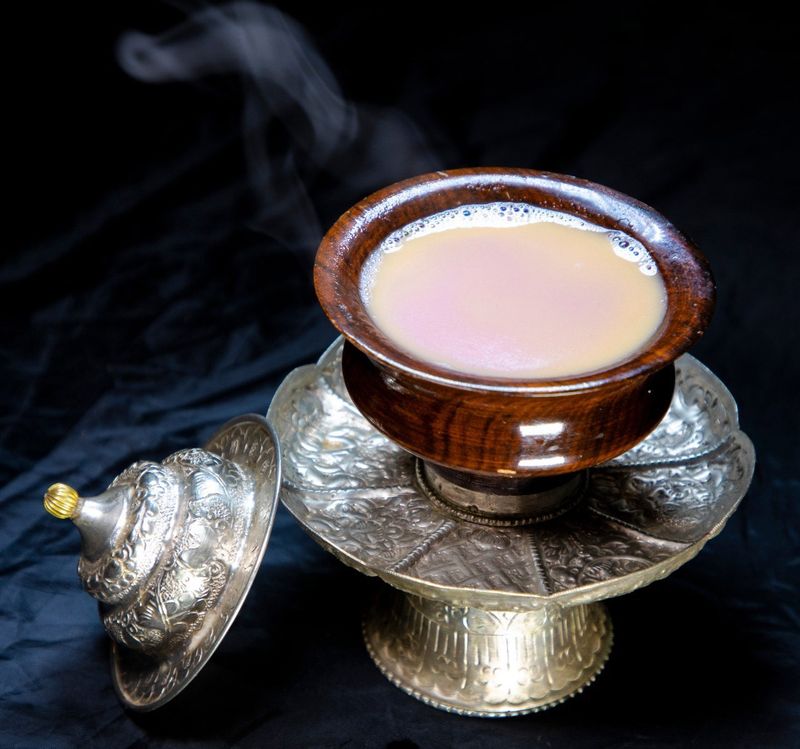The city of Bengaluru recently witnessed a unique popup by renowned chef Nilza Wangmo from the Alchi Kitchen (an all-woman café at Ladakh), at THE Park Bangalore under its flagship initiative, ‘Culinary Curations by THE Park.’ This programme serves as a dynamic platform for local chefs to showcase and champion the richness of local and micro cuisines, facilitating their integration into the broader culinary landscape. And this showcase of Ladakhi cuisine with an interactive cooking demonstration did just that.

Demystifying the food
The cuisine of Ladakh is influenced by other regions like Central Asia, Tibet, and China but it is quite unique as the usage of spice is very minimal – salt, pepper and dry ginger powder is used in most dishes. While soups were always a staple, pasta came into the cuisine from central Asia. The multigrain soup, thukpa and barley soup have been commonplace. Barley is a key ingredient as it is a staple used in bread, soup, and noodles. “Caraway seeds, dried cheese or chuppri, cheese powder and chives are some of the must have ingredients. In some regions apricot is used extensively in numerous forms like dry apricot powder and fresh apricot,” says Wangmo. Apricots are grown extensively in Sham valley in Western Ladakh where the weather is slightly warmer. We also have grapes, mulberry, barley, and buckwheat. Buckwheat grown in the Nubra Valley has a white flour whereas in the southern part the buckwheat flour is brown. The cuisine also has a variety of chutneys used as accompaniments to the meal including radish, red chilli, and walnut chutneys. Wangmo concedes that the chutney culture has probably come from nomadic shepherds as they would carry walnuts and onions in their pockets and pound them together on a stone and eat it with some sort of bread made with barley or buckwheat, called Paba.

Technique tricks
One of the distinctive elements of the food is the use of varied techniques. For instance, the noodles made of wheat flour are actually hand-rolled and dusted with flour before being part of any of the dishes. “Monks in the monastery also make similar noodles,” avers Wangmo. There are also baking techniques borrowed from Central Asian Muslims to make tandoor roti as well as fermentation techniques. The local bread Khambir in fact is fermented and even pickles are fermented. Whole barley is also fermented to make a local beer. The best part is that every dish symbolises the story of traditional tradition, resilience, and adaptability as they have their own method of preparation and according to the taste and availability of ingredients. As you go towards the north and eastern side of Ladakh, people use more dairy and the kind of pasta they make is different as they do not cook it in the sauce. They make the pasta dry and dip it in the sauce and eat,” says Wangmo. Incidentally, the traditional pasta is only made using wheat flour and water and the dough is rough to allow it to absorb all the flavours. Refined flour is usually not used as it blocks the holes of the pasta. Simple techniques like pressure cooking meats and using simple spices are also prevalent here.

Signature choices
Some quintessential Ladakhi dishes include chutagi (that Wangmo smiles and explains is a rich person’s meal) that is a wheat pasta soup to which potatoes, cauliflower, carrots, onion, spinach, and tomato are added and seasoned with mustard oil, turmeric, salt, pepper, caraway seeds and chilli powder. This is usually always served to any guests that visit a person’s home. “Another dish that is usually served for breakfast and a must to welcome guests is Phemar. This dish is quite rich as it uses a combination of butter, yak cheese powder, sugar, butter tea, and barley flour to make a porridge,” says Wangmo. Interestingly, the cuisine was very meat heavy and apart from turnips there were hardly other vegetables that grew here. It was in the early 1900s when the missionaries travelled to the region, they brought potatoes, radish, peas, lettuce, and spinach to the region. Yak meat was a popular choice but is now banned. Now, chicken and lamb are popular and these are made in a rustic way without heavy spices.

Ingredient fix
What makes the food distinct is that Ladakh also has its distinct local ingredients. Take the example of the mountain peas that are harvested only once they become brown inside the pod and are smaller in size. The taste is also slightly different compared to the regular peas as it is not as sweet. Wild greens like stinging nettle are used in Zathuk, a soup made to combat the cold and harsh winters as well as Savan, a local green that has a strong, sharp flavour and a few leaves add a nice flavour to the soup. “We also use tender buckwheat leaves, mustard leaves that are tender are also made into a raita. Also, the method of making the cheese itself is different as we boil it. After churning the buttermilk, we separate the butter and we boil it and allow it to curdle and hang overnight and next day this is kneaded by hand and it is squeezed using the hands and is sun dried. The technique and taste of the cheese itself varies from region to region. In Nubra Valley, certain areas make female yak cheese while in Zanskar the cheese is creamier and softer,” says Wangmo. And if you would like to make a Ladakhi meal without access to these ingredients she suggests that you swap chives with fresh chives, use Parmesan instead of yak cheese and regular peas instead of mountain peas.

Say cheers
The drinks of the region are also distinct as they use ingredients grown locally – whether it is the Ladakhi supari, local large sized cardamom, or the special chillies of the area. Sample this for instance. The Nubra Valley Velvet uses an extract from the rare Sanjeevani flower and is mixed with vodka and in-house bitters. The Driftwood Dusk-Supari has a distinctive taste of Ladakhi supari, infused with the Himalayan touch with spiced molasses, gin and sour. The Karakoram Malt is a cocktail that captures the essence of a Ladakhi sunrise in every sip courtesy the combination of orange zesty, white rum, sweet vermouth, and sparkling water. Interestingly even the non-alcoholic versions are great, many of them are sweetened with jaggery to add a touch of health. Arrack-based and naturally fermented barley are popular drinks and grape wine from the Aryan valley is popular too. While the people of the region do not prefer anything overly sweet, a Ladakhi meal is sure to leave you with many sweet memories.


